 A sprained ankle can cause severe pain and discomfort. It generally occurs when the ligaments tear or stretch, as a result of falling, or from overusing the ankle. It differs from a strain, which affects muscles or tendons. Some of the symptoms that are associated with this type of injury can consist of swelling, bruising, and it is often difficult to move the ankle. If the sprain is severe, a popping noise may be heard at the time of the fall, which may indicate an unstable joint. Moderate relief may be found when the affected ankle is elevated, which may help to alleviate a portion of the swelling. Additionally, it may be beneficial to wrap the ankle in an elastic bandage which can provide the support that is needed as the healing process occurs. If you have sprained your ankle, it is suggested that you consult with a podiatrist who can properly treat this condition.
A sprained ankle can cause severe pain and discomfort. It generally occurs when the ligaments tear or stretch, as a result of falling, or from overusing the ankle. It differs from a strain, which affects muscles or tendons. Some of the symptoms that are associated with this type of injury can consist of swelling, bruising, and it is often difficult to move the ankle. If the sprain is severe, a popping noise may be heard at the time of the fall, which may indicate an unstable joint. Moderate relief may be found when the affected ankle is elevated, which may help to alleviate a portion of the swelling. Additionally, it may be beneficial to wrap the ankle in an elastic bandage which can provide the support that is needed as the healing process occurs. If you have sprained your ankle, it is suggested that you consult with a podiatrist who can properly treat this condition.
Ankle sprains are common but need immediate attention. If you need your feet checked, contact Bruce Smit, DPM from Frankfort Foot & Ankle Clinic. Our doctor can provide the care you need to keep you pain-free and on your feet.
How Does an Ankle Sprain Occur?
Ankle sprains take place when the ligaments in your ankle are torn or stretched beyond their limits. There are multiple ways that the ankle can become injured, including twisting or rolling over onto your ankle, putting undue stress on it, or causing trauma to the ankle itself.
What Are the Symptoms?
Preventing a Sprain
Treatment of a Sprain
Treatment of a sprain depends on the severity. Many times, people are told to rest and remain off their feet completely, while others are given an air cast. If the sprain is very severe, surgery may be required.
If you have suffered an ankle sprain previously, you may want to consider additional support such as a brace and regular exercises to strengthen the ankle.
If you have any questions please feel free to contact our office located in Frankfort, IL . We offer the newest diagnostic and treatment technologies for all your foot and ankle needs.
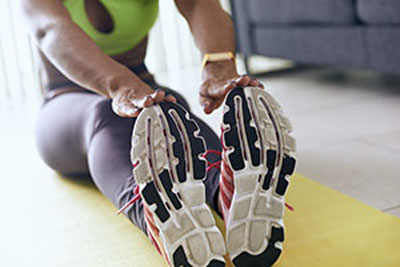 A painful foot injury can take the joy out of running. It can happen suddenly, or develop gradually, and may never completely disappear. There are methods that may help to prevent running injuries from occurring. These can consist of performing stretches and exercises that can keep the body strong. Research has indicated it is beneficial to have strong glute muscles, and this a critical factor in maintaining strength and power while running. Additionally, muscle soreness may be diminished when foam rolling is implemented, and this may also help to improve range of motion. When running shoes are purchased, it is important to choose shoes that fit correctly, and support your body as the miles are increased. If you would like to learn about additional stretches that can help to prevent running injuries, please consult with a podiatrist.
A painful foot injury can take the joy out of running. It can happen suddenly, or develop gradually, and may never completely disappear. There are methods that may help to prevent running injuries from occurring. These can consist of performing stretches and exercises that can keep the body strong. Research has indicated it is beneficial to have strong glute muscles, and this a critical factor in maintaining strength and power while running. Additionally, muscle soreness may be diminished when foam rolling is implemented, and this may also help to improve range of motion. When running shoes are purchased, it is important to choose shoes that fit correctly, and support your body as the miles are increased. If you would like to learn about additional stretches that can help to prevent running injuries, please consult with a podiatrist.
All runners should take extra precaution when trying to avoid injury. If you have any concerns about your feet, contact Bruce Smit, DPM of Frankfort Foot & Ankle Clinic. Our doctor will treat your foot and ankle needs.
How to Prevent Running Injuries
There are a lot of mistakes a runner can make prior to a workout that can induce injury. A lot of athletes tend to overstretch before running, instead of saving those workouts for a post-run routine. Deep lunges and hand-to-toe hamstring pulls should be performed after a workout instead of during a warmup. Another common mistake is jumping into an intense routine before your body is physically prepared for it. You should try to ease your way into long-distance running instead of forcing yourself to rush into it.
More Tips for Preventing Injury
If you have any questions, please feel free to contact our office located in Frankfort, IL . We offer the newest diagnostic and treatment technologies for all your foot care needs.
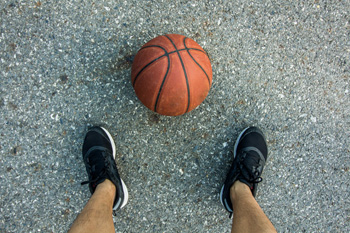 Luka Doncic is a guard for the Dallas Mavericks and had to miss the game that was played against the Bucks after he sprained his ankle. The injury happened during the game against Miami, and the Mavericks lost during overtime with a score of 122-118. His injury was a significant factor in losing points for the team. The injury occurred when his right foot landed on the foot of another player. This is the first game he has currently not been able to play in, and has missed ten games in his rookie season as a result of minor injuries.
Luka Doncic is a guard for the Dallas Mavericks and had to miss the game that was played against the Bucks after he sprained his ankle. The injury happened during the game against Miami, and the Mavericks lost during overtime with a score of 122-118. His injury was a significant factor in losing points for the team. The injury occurred when his right foot landed on the foot of another player. This is the first game he has currently not been able to play in, and has missed ten games in his rookie season as a result of minor injuries.
Sports related foot and ankle injuries require proper treatment before players can go back to their regular routines. For more information, contact Bruce Smit, DPM of Frankfort Foot & Ankle Clinic. Our doctor can provide the care you need to keep you pain-free and on your feet.
Sports Related Foot and Ankle Injuries
Foot and ankle injuries are a common occurrence when it comes to athletes of any sport. While many athletes dismiss the initial aches and pains, the truth is that ignoring potential foot and ankle injuries can lead to serious problems. As athletes continue to place pressure and strain the area further, a mild injury can turn into something as serious as a rupture and may lead to a permanent disability. There are many factors that contribute to sports related foot and ankle injuries, which include failure to warm up properly, not providing support or wearing bad footwear. Common injuries and conditions athletes face, including:
Sports related injuries are commonly treated using the RICE method. This includes rest, applying ice to the injured area, compression and elevating the ankle. More serious sprains and injuries may require surgery, which could include arthroscopic and reconstructive surgery. Rehabilitation and therapy may also be required in order to get any recovering athlete to become fully functional again. Any unusual aches and pains an athlete sustains must be evaluated by a licensed, reputable medical professional.
If you have any questions please feel free to contact our office located in Frankfort, IL . We offer the newest diagnostic and treatment technologies for all your foot and ankle needs.
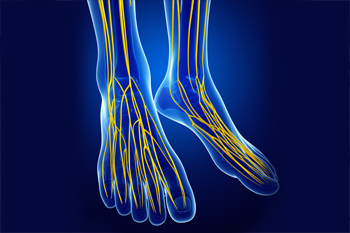 Poor circulation in the feet occurs when the body is unable to carry sufficient amounts of blood to the area. It typically occurs as a result of blocked arteries and can cause severe pain and discomfort. The symptoms that are associated with poor circulation can include numbness, tingling, foot cramps, and difficulty walking. Some patients experience visible symptoms that may consist of dry skin, swollen feet, and the toes may appear discolored. In addition to blocked arteries, there may be other reasons that may cause poor circulation. These may include smoking, standing or sitting for extended periods of time, and eating unhealthy foods. Relief may be found when the feet are frequently elevated and if a gentle exercise regime is incorporated into your daily routine.
Poor circulation in the feet occurs when the body is unable to carry sufficient amounts of blood to the area. It typically occurs as a result of blocked arteries and can cause severe pain and discomfort. The symptoms that are associated with poor circulation can include numbness, tingling, foot cramps, and difficulty walking. Some patients experience visible symptoms that may consist of dry skin, swollen feet, and the toes may appear discolored. In addition to blocked arteries, there may be other reasons that may cause poor circulation. These may include smoking, standing or sitting for extended periods of time, and eating unhealthy foods. Relief may be found when the feet are frequently elevated and if a gentle exercise regime is incorporated into your daily routine.
Poor circulation is a serious condition and needs immediate medical attention. If you have any concerns with poor circulation in your feet contact Bruce Smit, DPM of Frankfort Foot & Ankle Clinic. Our doctor will treat your foot and ankle needs.
Poor Circulation in the Feet
Poor blood circulation in the feet and legs is can be caused by peripheral artery disease (PAD), which is the result of a buildup of plaque in the arteries.
Plaque buildup or atherosclerosis results from excess calcium and cholesterol in the bloodstream. This can restrict the amount of blood which can flow through the arteries. Poor blood circulation in the feet and legs are sometimes caused by inflammation in the blood vessels, known as vasculitis.
Causes
Lack of oxygen and oxygen from poor blood circulation restricts muscle growth and development. It can also cause:
Those who have diabetes or smoke are at greatest risk for poor circulation, as are those who are over 50. If you have poor circulation in the feet and legs it may be caused by PAD and is important to make changes to your lifestyle in order to reduce risk of getting a heart attack or stroke. Exercise and maintaining a healthy lifestyle will dramatically improve conditions.
As always, see a podiatrist as he or she will assist in finding a regimen that suits you. A podiatrist can also prescribe you any needed medication.
If you have any questions please feel free to contact our office located in Frankfort, IL . We offer the newest diagnostic and treatment technologies for all your foot and ankle needs.
Read more about Causes, Symptoms, and Treatment of Poor Blood Circulation in the Feet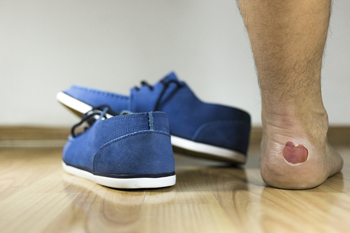 The most common cause of blisters on the feet is friction. This can happen as a result of wearing shoes and socks that do not fit correctly. Additionally, there may be other circumstances that can cause blisters. These can consist of an allergic reaction to an insect bite, severe sunburn, or medical conditions such as dermatitis. A blister will generally form as the body’s natural reaction to protect skin that has been damaged. It appears as a bubble that is filled with fluid, and will gradually drain when the new skin forms. It may help to wear an elastic bandage over the blister, which can help to protect the area as daily activities are accomplished. If you have a blister on your foot that has become infected, it is advised that you consult with a podiatrist who can offer treatment solutions.
The most common cause of blisters on the feet is friction. This can happen as a result of wearing shoes and socks that do not fit correctly. Additionally, there may be other circumstances that can cause blisters. These can consist of an allergic reaction to an insect bite, severe sunburn, or medical conditions such as dermatitis. A blister will generally form as the body’s natural reaction to protect skin that has been damaged. It appears as a bubble that is filled with fluid, and will gradually drain when the new skin forms. It may help to wear an elastic bandage over the blister, which can help to protect the area as daily activities are accomplished. If you have a blister on your foot that has become infected, it is advised that you consult with a podiatrist who can offer treatment solutions.
Blisters may appear as a single bubble or in a cluster. They can cause a lot of pain and may be filled with pus, blood, or watery serum. If your feet are hurting, contact Bruce Smit, DPM of Frankfort Foot & Ankle Clinic. Our doctor can provide the care you need to keep you pain-free and on your feet.
Foot Blisters
Foot blisters are often the result of friction. This happens due to the constant rubbing from shoes, which can lead to pain.
What Are Foot Blisters?
A foot blister is a small fluid-filled pocket that forms on the upper-most layer of the skin. Blisters are filled with clear fluid and can lead to blood drainage or pus if the area becomes infected.
Symptoms
(Blister symptoms may vary depending on what is causing them)
Prevention & Treatment
In order to prevent blisters, you should be sure to wear comfortable shoes with socks that cushion your feet and absorb sweat. Breaking a blister open may increase your chances of developing an infection. However, if your blister breaks, you should wash the area with soap and water immediately and then apply a bandage to the affected area. If your blisters cause severe pain it is important that you call your podiatrist right away.
If you have any questions, please feel free to contact our office located in Frankfort, IL . We offer the newest diagnostic and treatment technologies for all your foot care needs.
Corns are hardened layers of skin that take the form of a yellow-colored bump, most commonly found on the side or bottom of one’s feet. Corns are often sensitive to the touch and may cause pain when wearing shoes. They normally form due to improper footwear that provides little space for your feet, and commonly affect those who walk or stand for long periods of time. To remove a corn, we recommend you seek professional care from a podiatrist who can treat your condition and alleviate your pain.
Corns can make walking very painful and should be treated immediately. If you have questions regarding your feet and ankles, contact Bruce Smit, DPM of Frankfort Foot & Ankle Clinic. Our doctor will treat your foot and ankle needs.
Corns: What Are They? And How Do You Get Rid of Them?
Corns are thickened areas on the skin that can become painful. They are caused by excessive pressure and friction on the skin. Corns press into the deeper layers of the skin and are usually round in shape.
Ways to Prevent Corns
There are many ways to get rid of painful corns such as:
Treating Corns
Although most corns slowly disappear when the friction or pressure stops, this isn’t always the case. Consult with your podiatrist to determine the best treatment option for your case of corns.
If you have any questions please feel free to contact our office located in Frankfort, IL . We offer the newest diagnostic and treatment technologies for all your foot and ankle needs.
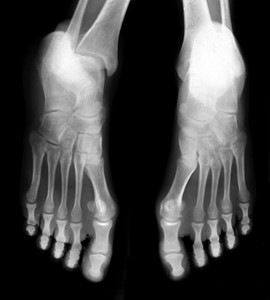 Stress fractures consist of small cracks in the bone or severe bruising within a bone, that develop most commonly from sudden increases in physical activity. For example, if a person begins exercising more often during the week for a longer duration and with a more intense workout regime, they are increasing their likelihood of obtaining a stress fracture. They can also occur due to improper form, a change in surface, or the use of poor equipment. To avoid getting a stress fracture, it is recommended to slowly introduce yourself to a new activity, make sure you’re using the proper equipment for the activity of your choice, and vary your activities to avoid over straining a particular area of your body. Swelling, tenderness, pain, and possible bruising in the foot or ankle region are a few symptoms one might experience if they have a stress fracture. To help treat your fracture it is recommended to modify your activities, use protective footwear, and practice casting. If untreated, stress fractures can lead to further foot and ankle complications, which is why we recommend you visit a podiatrist for a proper diagnosis and treatment regime.
Stress fractures consist of small cracks in the bone or severe bruising within a bone, that develop most commonly from sudden increases in physical activity. For example, if a person begins exercising more often during the week for a longer duration and with a more intense workout regime, they are increasing their likelihood of obtaining a stress fracture. They can also occur due to improper form, a change in surface, or the use of poor equipment. To avoid getting a stress fracture, it is recommended to slowly introduce yourself to a new activity, make sure you’re using the proper equipment for the activity of your choice, and vary your activities to avoid over straining a particular area of your body. Swelling, tenderness, pain, and possible bruising in the foot or ankle region are a few symptoms one might experience if they have a stress fracture. To help treat your fracture it is recommended to modify your activities, use protective footwear, and practice casting. If untreated, stress fractures can lead to further foot and ankle complications, which is why we recommend you visit a podiatrist for a proper diagnosis and treatment regime.
Stress fractures occur when there is a tiny crack within a bone. To learn more, contact Bruce Smit, DPM from Frankfort Foot & Ankle Clinic. Our doctor can provide the care you need to keep you pain free and on your feet.
How Are They Caused?
Stress fractures are the result of repetitive force being placed on the bone. Since the lower leg and feet often carry most of the body’s weight, stress fractures are likely to occur in these areas. If you rush into a new exercise, you are more likely to develop a stress fracture since you are starting too much, too soon. Pain resulting from stress fractures may go unnoticed at first, however it may start to worsen over time.
Risk Factors
Stress fractures do not always heal properly, so it is important that you seek help from a podiatrist if you suspect you may have one. Ignoring your stress fracture may cause it to worsen, and you may develop chronic pain as well as additional fractures.
If you have any questions, please feel free to contact our office located in Frankfort, IL . We offer the newest diagnostic and treatment technologies for all your foot care needs.
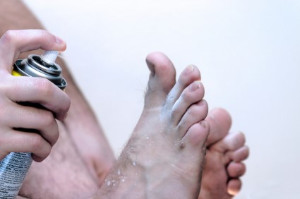 A common type of fungal infection is known as athlete’s foot. This contagious fungus lives and thrives in warm and moist environments, consisting of public pools, shower room floors, and surrounding areas. Research has indicated that there are three specific types of athlete’s foot. If the skin between the fourth and fifth toes becomes red, peels, and gradually cracks, it is referred to as a toe web infection. If the skin on the bottom of the foot itches and becomes thick, it may be indicative a moccasin type infection. If you notice blisters under the skin, you may have a vesicular type infection. Mild cases of athlete’s foot may be treated using an antifungal spray. For more severe cases, it is advised that you consult with a podiatrist who can prescribe more aggressive forms of treatment.
A common type of fungal infection is known as athlete’s foot. This contagious fungus lives and thrives in warm and moist environments, consisting of public pools, shower room floors, and surrounding areas. Research has indicated that there are three specific types of athlete’s foot. If the skin between the fourth and fifth toes becomes red, peels, and gradually cracks, it is referred to as a toe web infection. If the skin on the bottom of the foot itches and becomes thick, it may be indicative a moccasin type infection. If you notice blisters under the skin, you may have a vesicular type infection. Mild cases of athlete’s foot may be treated using an antifungal spray. For more severe cases, it is advised that you consult with a podiatrist who can prescribe more aggressive forms of treatment.
Athlete’s Foot
Athlete’s foot is often an uncomfortable condition to experience. Thankfully, podiatrists specialize in treating athlete’s foot and offer the best treatment options. If you have any questions about athlete’s foot, consult with Bruce Smit, DPM from Frankfort Foot & Ankle Clinic. Our doctor will assess your condition and provide you with quality treatment.
What Is Athlete’s Foot?
Tinea pedis, more commonly known as athlete’s foot, is a non-serious and common fungal infection of the foot. Athlete’s foot is contagious and can be contracted by touching someone who has it or infected surfaces. The most common places contaminated by it are public showers, locker rooms, and swimming pools. Once contracted, it grows on feet that are left inside moist, dark, and warm shoes and socks.
Prevention
The most effective ways to prevent athlete’s foot include:
Symptoms
Athlete’s foot initially occurs as a rash between the toes. However, if left undiagnosed, it can spread to the sides and bottom of the feet, toenails, and if touched by hand, the hands themselves. Symptoms include:
Diagnosis and Treatment
Diagnosis is quick and easy. Skin samples will be taken and either viewed under a microscope or sent to a lab for testing. Sometimes, a podiatrist can diagnose it based on simply looking at it. Once confirmed, treatment options include oral and topical antifungal medications.
If you have any questions, please feel free to contact our office located in Frankfort, IL . We offer the newest diagnostic and treatment technologies for all your foot care needs.